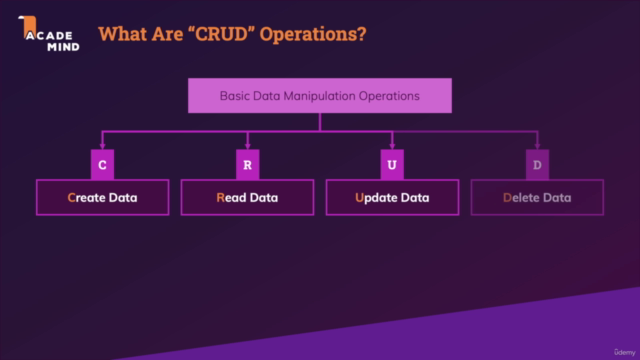SQL - The Complete Developer's Guide (MySQL, PostgreSQL)

Why take this course?
📚 SQL - The Complete Developer's Guide (MySQL, PostgreSQL)
🚀 Headline: From data definition to manipulation (CRUD, relations, JOIN): Learn SQL for MySQL, Postgresql & more from the ground up!
🔍 Course Description: SQL is without a doubt THE most important query language you can master in the realm of data! It's a cornerstone for many popular relational database management systems like MySQL or PostgreSQL, and it extends its reach into data analysis and big data tools such as Apache Spark.
🚀 Why Learn SQL? Knowing SQL isn't just valuable; it's indispensable. It opens up an endless array of opportunities and jobs in the tech industry, whether you're targeting relational databases or aspiring to become a data scientist. Mastery of SQL is key across various roles.
🛣️ Your Learning Path: This course offers two distinct learning paths to cater to your needs:
- The "Complete Course", which takes you through every aspect of SQL in detail.
- The "Quick Summary" path, designed for a rapid, yet comprehensive overview of SQL essentials.
🎥 Course Structure: Both paths are fully included in this course, allowing you to switch between them or undertake both simultaneously at your own pace. Start with the free first course section to get a taste of what this course has to offer and understand how to navigate through these paths.
🕰️ Real-World Application: SQL is a standardized language, but different databases have their nuances. This course focuses on SQL by using MySQL and PostgreSQL as examples, ensuring you're well-equipped to use SQL in either system.
📚 In-Depth Learning: Throughout the course, you will delve into a comprehensive set of SQL topics:
- Understanding what SQL is and mastering the core syntax.
- Writing SQL commands with confidence.
- Installing and setting up MySQL & PostgreSQL, as well as familiarizing yourself with various clients.
- Crafting database tables and choosing the right data types for your needs.
- Performing CRUD operations to create, read, update, and delete data effectively.
- Inserting data into tables and querying/filtering data.
- Splitting data across multiple tables to maintain a clean and organized database structure.
- Merging data with joins to generate combined result sets.
- Writing basic to complex queries to handle various data scenarios.
- Aggregating, grouping, and filtering data for insights.
- Utilizing built-in functions for working with numbers, text, or dates.
- Optimizing databases with indexes for better performance.
🌟 Additional Course Features:
- A 30-day refund period, so you can join risk-free.
- A comprehensive course curriculum that outlines all the content you'll engage with.
- A free preview section to give you a sneak peek into what this course entails and how it will empower your SQL skills.
👩💻 Who Is This Course For? This course is designed for developers, data scientists, students, or anyone curious about databases and SQL. Whether you're a beginner or looking to deepen your SQL knowledge, this course will guide you through the essentials and beyond.
📅 Ready to Get Started? Don't wait any longer - dive into the first course section today and embark on your journey to becoming an SQL pro with Academind by Maximilian Schwarzmüller! Let's unlock your data potential together! 🚀
Course Gallery




Loading charts...
Comidoc Review
Our Verdict
This course excels at introducing SQL concepts to beginners with its clear instructions and hands-on examples. While it covers both MySQL and PostgreSQL, some users may feel it's excessive or confusing. Although lacking advanced topics, this course provides a solid foundation for those looking to dive into the world of SQL.
What We Liked
- Covers both MySQL and PostgreSQL, providing a comprehensive understanding of SQL
- Well-structured and easy to follow, making it ideal for beginners
- Features practical examples and theory, enhancing the learning experience
- High-quality course offered by Academind, known for its student-centric approach
Potential Drawbacks
- Some users may find covering two databases confusing or unnecessary
- Lacks advanced topics like triggers and user-defined functions
- Occasionally outdated keywords can be found, but solutions are provided in QA sections